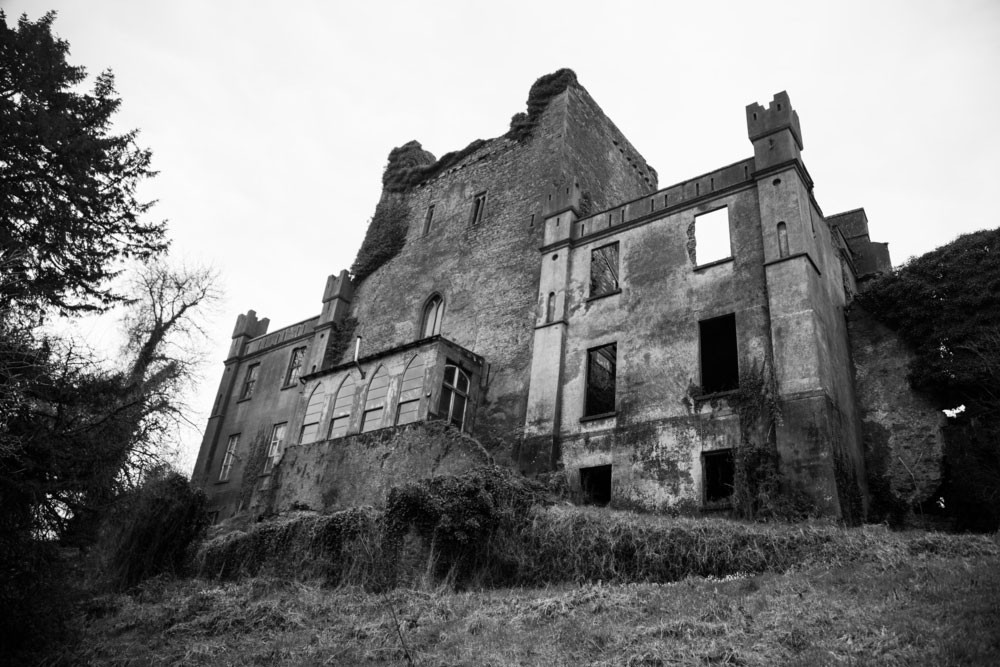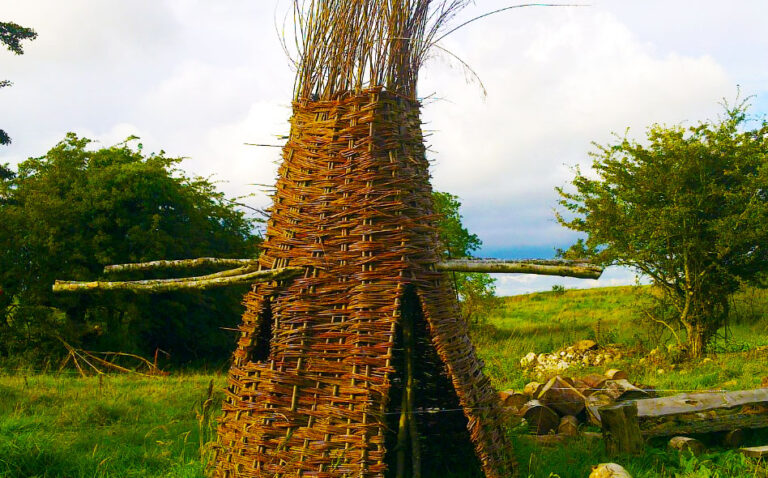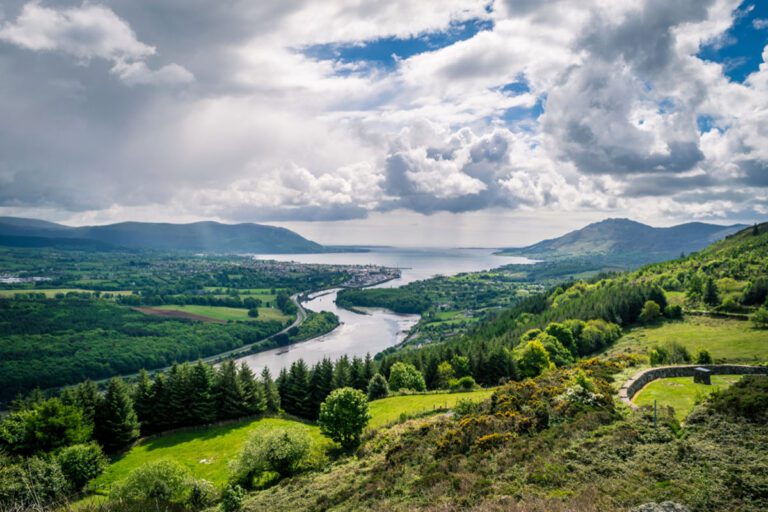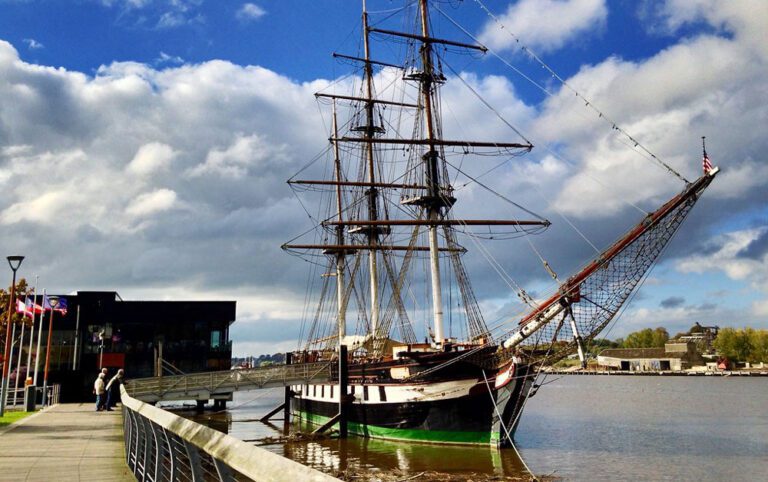Unearthing the Shadows
Ireland, a land where myths and legends breathe with the same life as the emerald landscapes and ancient castles that dot its countryside, is a place where history has a ghostly grip. Join me on a chilling journey into the heart of Ireland, where the past bleeds into the present, and the spirits of the long-departed refuse to rest.
These haunted castles, relics of a bygone era, are more than just stone and mortar. They are time echoes, where the dead’s residual energy mingles with the world of the living. As I set out on this gloomy journey, I’m reminded that Ireland’s past is a maze of pain and victory, love and treachery, all inscribed into the stones of these spectral fortifications.
Our journey to these haunted enclaves begins with Leap Castle, where secrets and spirits have mingled to form a disturbing tapestry. Its corridors bear quiet witness to heinous crimes, and its walls murmur the names of the forgotten. These are the stories I plan to tell as we journey into a world where the past refuses to die and the shadows hide mysteries that will send shivers down your spine.
So collect your courage, because we’re about to reveal the terrifying mysteries of Ireland’s haunted castles, where the past never sleeps and restless ghosts lurk.
Leap Castle’s Unholy Intrigue
Leap Castle stands in the heart of County Offaly, wrapped in mists of time. This ancient citadel, a black sentinel on the Irish landscape, has long been rumored to be one of the most haunted places in Ireland.
The veil between the living and the dead is thin here, and the spirits of the past appear in horrifying ways. The history of Leap Castle is steeped in blood, betrayal, and the whispers of the long-departed.
Thaddeus O’Carroll, a priest, was one of its most infamous residents. His own brother, a fellow priest, murdered him during mass by putting a blade into his heart. This heinous crime, known as the “Bloody Chapel,” left an everlasting mark on the castle. The chapel, which serves as both a place of worship and a place of death, is considered to be the heart of paranormal activity at Leap Castle.
Visitors to Leap Castle have claimed terrifying encounters, ranging from the uncomfortable feeling of being watched by invisible eyes to dark figures darting along the hallways. The air is thick with dread, and the castle’s walls appear to echo with pained cries from the past.
But Leap Castle is only the starting point for our trek through Ireland’s spectral history. Next we’ll visit Charleville Castle, where the supernatural is intermingled with stories of love and sorrow.
As we delve deeper into the haunted castles of Ireland, remember that the darkness of history can cast long shadows, and the past is never truly gone.

Love, Loss, and Lingering Spirits at Charleville Castle
Charleville Castle is a large and enigmatic edifice located in County Offaly, not far from the iconic Leap Castle. This beautiful Gothic Revival castle guards tales of love, loss, and the spectral vestiges of the past, in addition to its magnificent architecture.
Charleville Castle, built in the late 18th century by the powerful Bury family, was a tribute to their wealth and ambition. The castle was named after Charles William Bury, the second Earl of Charleville. The castle’s history, however, is tarnished by both victory and tragedy.
Within these walls, we find the heartbreaking story of Harriet, the youngest daughter of the third Earl of Charleville. Harriet was described as a vivacious and enthusiastic young lady. Her life took a fatal turn when she fell in love with a young man who was not approved by her family.
Devastated by their refusal to allow her marriage, Harriet’s spirit seemed to wither away. She retreated to the topmost tower of the castle, where she remained in self-imposed exile until her death.
Harriet’s spirit is reported to dwell within Charleville Castle. Visitors have reported seeing her spectral figure, which frequently appears in the tower where she spent her final days. She can be seen looking out the windows wistfully or descending the grand staircase, her essence permanently interwoven with the castle.
Remember that the past never fully dies, and the echoes of history continue to impact the present as we venture further inside these haunting castles.
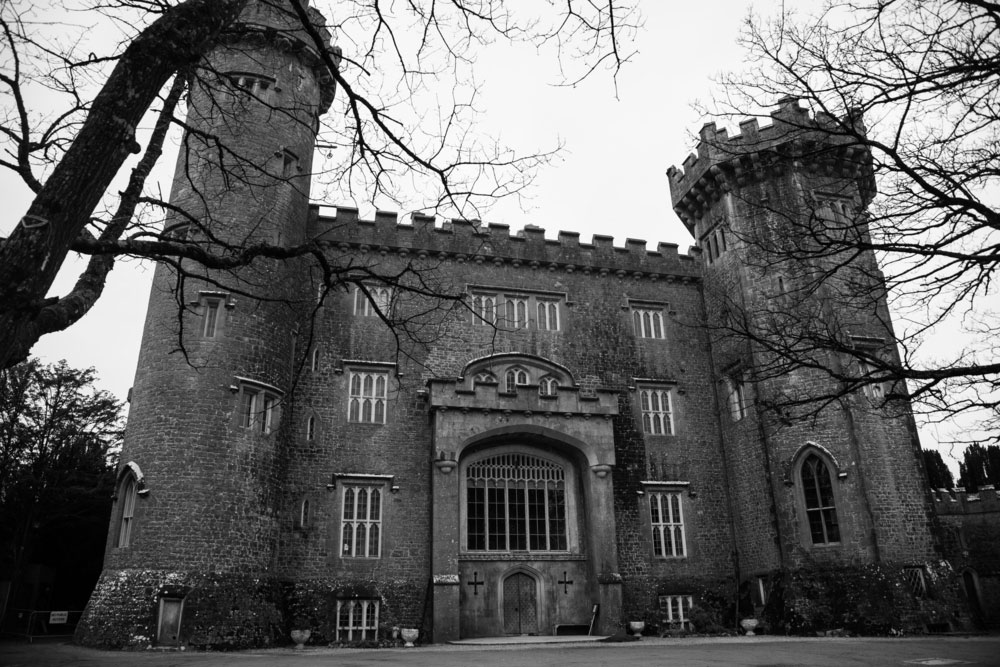
Duckett’s Grove – A Hauntingly Beautiful Castle
Duckett’s Grove Castle stands as both a tribute to grandeur and a melancholy memory of Ireland’s history in the somber light of the fading day. This majestic gothic-style castle in County Carlow is shrouded in mystery and folklore, enchanting visitors and sending thrills down their spines.
William Duckett, a wealthy landowner, built the castle in the early nineteenth century, with its towering towers and majestic exterior. Its distinctive architectural style and exquisite attention to detail make it a captivating sight. However, it is not just the outside splendor of Duckett’s Grove that draws many visitors, but also its reputation for being haunted.
For years, stories of roaming spirits and spooky apparitions have circled Duckett’s Grove. Perhaps the most famous story is that of the ‘Lady in White,’ a specter thought to be the ghost of Lady Maria, the castle’s builder’s wife. According to local tradition, she died after falling down a stairway under strange circumstances. Her agitated soul is claimed to remain, and some tourists claim to have seen her wandering the ruins of the castle.
Despite its ghostly reputation, Duckett’s Grove is nonetheless a stunningly beautiful location. Its expansive grounds and surrounding Walled Garden, constructed in the nineteenth century by famous garden architect Ninian Niven, are a pleasure to behold. A tranquil yet ominous ambiance is created by intricately planned pathways, unusual plants, and attractive gazebos. It’s a location where you can go back in time, connect with nature, and possibly even sense the presence of people who formerly strolled its grounds.
Duckett’s Grove Castle is a must-see in Ireland for history buffs and ghost hunters alike. The combination of history, mystery, and natural beauty creates an experience unlike any other. It’s a spot that can send shivers down your spine while also leaving you in awe of Ireland’s stunningly beautiful surroundings.
As the day’s light vanishes and the shadows lengthen, the captivating enigma of Duckett’s Grove persists. With a rich history, ghostly tales, and stunning gardens, it offers a unique blend of charm and eeriness that continues to enthrall visitors, ensuring that its story lives on, just like the whispers of its restless spirits.

Loftus Hall: Satan’s Playground
Our tour of Ireland’s haunted castles would be incomplete without a stop at Loftus Hall, a location with a history as eerie as the ghostly encounters that are supposed to take place within its walls.
Loftus Hall overlooks the wild and stormy seas of the Celtic Sea from the barren Hook Peninsula in County Wexford. Its ominous silhouette has been synonymous with haunting stories, earning it the title “Ireland’s Most Haunted House.”
Loftus Hall’s history is shrouded in mystery and terror. The Tottenham family, who moved to Ireland from England, built it in the late 18th century. The most infamous chapter in the castle’s history, however, relates around a stranger’s visit one stormy night.
A dark and stormy night in 1765, according to folklore, brought a ship to the Hook Peninsula. A mystery guest arrived at Loftus Hall seeking safety from the raging storm. The Tottenhams extended their hospitality, but their guests’ behavior became increasingly uncomfortable as the night progressed.
A member of the family dropped a card during a game of cards, and as she bent down to grab it, she saw that the visitor had cloven hooves. He exposed himself as the Devil and blasted through the roof of Loftus Hall, leaving a huge hole in his wake.
Loftus Hall is claimed to have been permanently scarred by the devil’s visit. Visitors and inhabitants have recounted encounters with apparitions and paranormal events for decades. Phantom footsteps, disembodied voices, and ghostly forms are only a few of the strange things that happen within its boundaries.
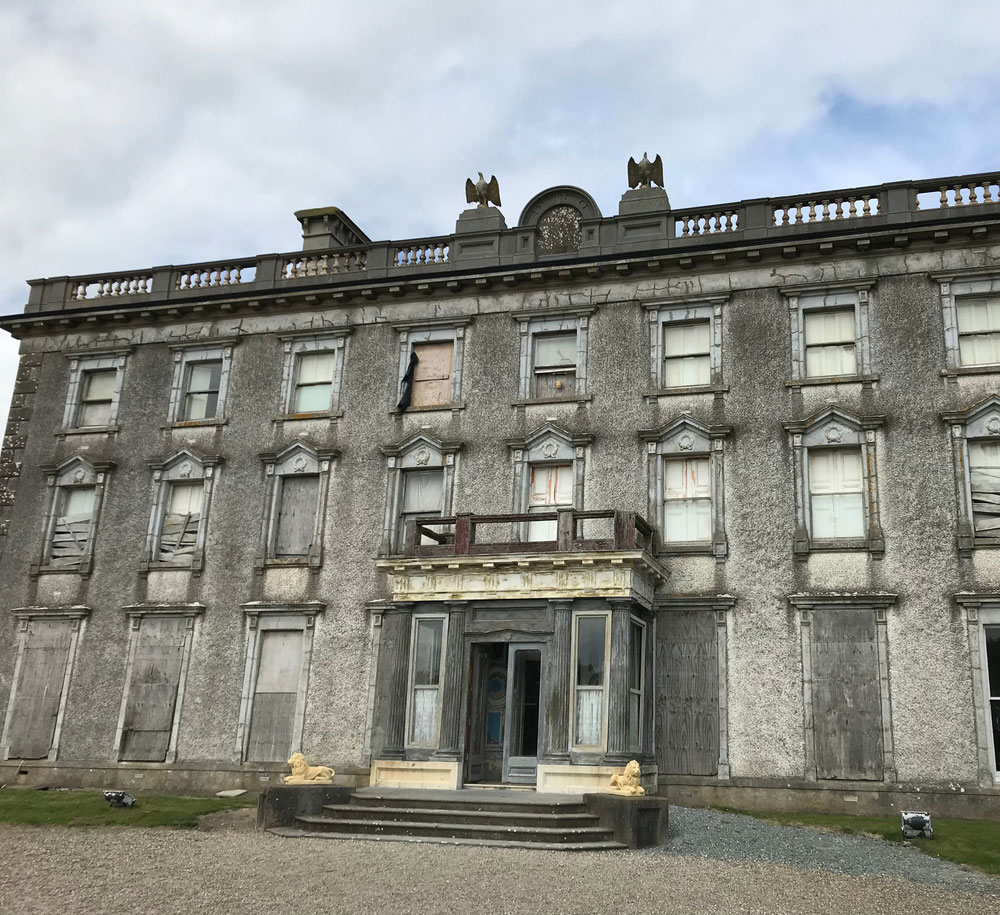
A Haunting Legacy
As our journey through the haunted castles of Ireland draws to a close, we can’t help but reflect on the chilling tales and the eerie history that these ancient fortresses hold. These castles have become not just stone structures but vessels of stories, both ghostly and human.
Ireland, a country steeped in traditions, folklore, and rich history, serves as the ideal setting for these tales of hauntings and restless spirits. From the gory past of Leap Castle to the enigmatic spirit of Duckett’s Grove, each of the castles we’ve visited—Leap Castle, Charleville Forest Castle, Duckett’s Grove, and Loftus Hall—each has its own distinct brand of eerie.
One may almost sense the presence of those who have long since passed away in the shadowy hallways and echoing chambers of these castles. The traditions and experiences of innumerable people who have seen ghostly phenomena in these historic fortresses attest to the supernatural’s enduring attraction.
For anyone brave enough to enter these haunted castles, the subject of paranormal belief becomes secondary to the intense, often disturbing ambiance these locations create. These castles leave a lasting impact on those who enter their embrace, whether it’s the residual energy of previous inhabitants, echoes of great tragedies, or something beyond human comprehension.
While we’ve traveled through these castles in a series of short stories, the history and hauntings of Ireland’s historic castles are a vast tapestry woven with threads of the unusual, weird, and unexplainable. Ireland’s haunted castles are a rich and eternally interesting source of intrigue for anyone seeking to experience the paranormal.
We hope we have shed some light on the spine-tingling legends and ghostly inhabitants that haunt these historic structures. Should you ever find yourself on the Emerald Isle, consider visiting these castles – but beware, for in their shadowy depths, you may encounter more than just stone walls and relics of the past.
Thank you for joining us on this journey through the haunted castles of Ireland. May your own adventures be filled with mystery, wonder, and just a touch of the supernatural.
And with that, we bid you farewell from the realm of the unknown, hoping that, like the ghosts that linger within these ancient castles, these stories will continue to haunt your thoughts long after you’ve turned the final page.

